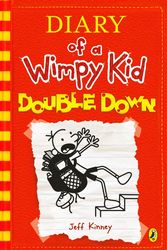
The Destruction of Lower Manhattan
Danny Lyon
I came to see the buildings as fossils of a time past. These buildings were used during the Civil War. The men were all dead, but the buildings were still here, left behind as the city grew around them....The passing of buildings was for me a great event. It didn’t matter so much whether they were of architectural importance. What mattered to me was that they were about to be destroyed. Whole blocks would disappear. An entire neighborhood. Its few last loft occupying tenants were being evicted, and no place like it would ever be built again. The streets involved were among the oldest in New York and when sections of some were closed by the barriers of the demolition men, it meant they would never be opened again." —Danny Lyon In late 1966, Danny Lyon returned to New York City, having just finished The Bikeriders. He was twenty-five. Living in a loft on the corner of Beekman and William Streets in Downtown Manhattan, Lyon saw that half the buildings on Beekman Street were boarded up, about to be demolished. That year an incredible sixty acres of mostly nineteenth-century buildings were slated for demolition, all below Canal Street. The seven-acre site where the Twin Towers would eventually stand was being cleared, a new ramp added to the Brooklyn Bridge, Pace University expanded, and the Washington Market was being moved to the Bronx. Whole sections of Lower Manhattan were being turned into rubble. Lyon thought of the title The Destruction o
Booko found 2 book editions
Product filters
| Product |
Details
|
Price
|
New
|
Used
|
|---|---|---|---|---|
|
|
New: Being refreshed...
Used: Being refreshed...
|
New: Being refreshed...
Used: Being refreshed...
|
Being refreshed... | Being refreshed... |
|
|
New: Being refreshed...
Used: Being refreshed...
|
New: Being refreshed...
Used: Being refreshed...
|
Being refreshed... | Being refreshed... |
Booko collects this information from user contributions and sources on the internet - it is not a definitive list of editions. Search Booko for other editions of The Destruction of Lower Manhattan.





















